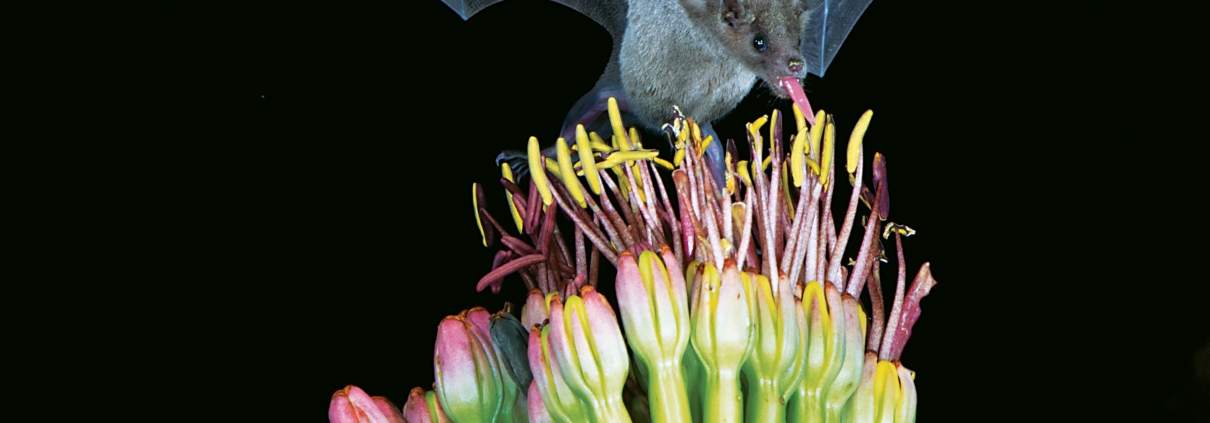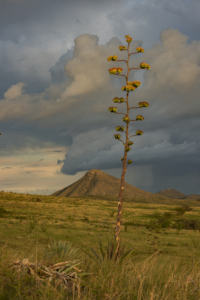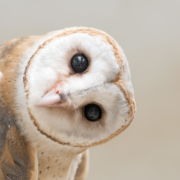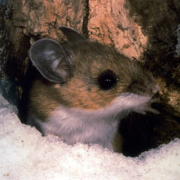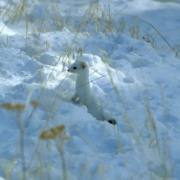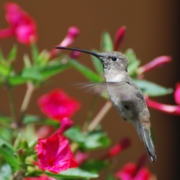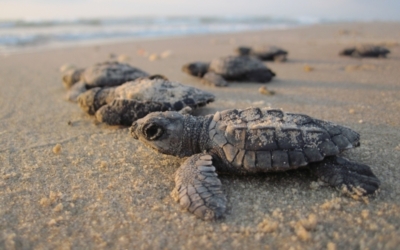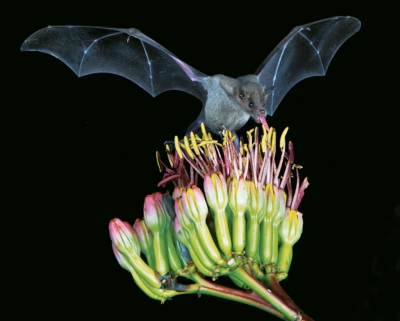Guest Blog: Save a Bat, Plant an Agave
En Español
…
The American southwest and northern Mexico are beautiful in the spring. The cool mornings reveal migrating pollinators spreading north across the landscape. Hummingbirds, butterflies and bats hopscotch north with the pulse of blooming plants, eager to start their families and raise their young. Migrating long-nosed bats and their reliance on agave and columnar cacti is akin in scale and connectedness to monarchs and milkweed. These bats need nectar from blooming agave and columnar cacti to survive.
The nectar corridor is fragile; each cluster of blooming plants must not be farther than their preferred pollinator can fly. When development and land conversion do not take this network of plants into consideration, the system can become disrupted. Thoughtful landscape restoration of nectar plants, primarily agave, can provide the nectar network these bats need to fuel their journey northward to their maternity caves where they will bear and raise their young. We can protect the migration of these bats and other pollinators through a combined effort.
Agave makes a bold statement in drought-tolerant native landscaping. Towering panicles of blooming flowers attract a host of native insects and are a critical staple for Mexican and lesser long-nosed bats. Clusters of blooming agave also tell a story about community, culture and sustainability. Agave is part of the cultural identity for many communities. Agave is part of the cultural identity for many communities. For many traditional cultures, particularly in Mexico, agave is an important plant used for traditional drinks and food, local fibers, erosion control, pasture fencing and forage for cattle, particularly in dry years.
Nectar corridor restoration can be used to meet a whole variety of business goals while also benefiting nectar bats and local communities with cultural ties to agave. They are one strategy for private companies to challenge themselves to think differently about how to reimagine their corporate campus, transform and restore remediation sites, and prioritize STEM education. The private sector can also play a critical role in the recovery and protection of endangered species by planting agave to enhance habitat connectivity for pollinators like Mexican and lesser long-nosed bats.
View the on-demand webinar – Bats and Agave: Nectar Corridors and Cultural Connections in the Southwest – to learn more through about this opportunity to pursue WHC Conservation Certification through a collaboration with Bat Conservation International to protect migratory nectar bats by planting agave.
Join us and save bats by planting agave – we need you!
Mylea Bayless leads Bat Conservation International’s newly developed Network & Partnerships Division with over 20 years of experience in building collaborative teams for conservation, research, and wildlife management. Bayless joined BCI in 2006, with a career portfolio including State and Federal agency service and Academic research. Including bats, her research background includes a variety of wildlife (including spotted owls, bald eagles, American pronghorn, Merriam’s turkeys, and Rocky Mountain elk). She holds degrees from Colorado State University (B.S., M.S.).
